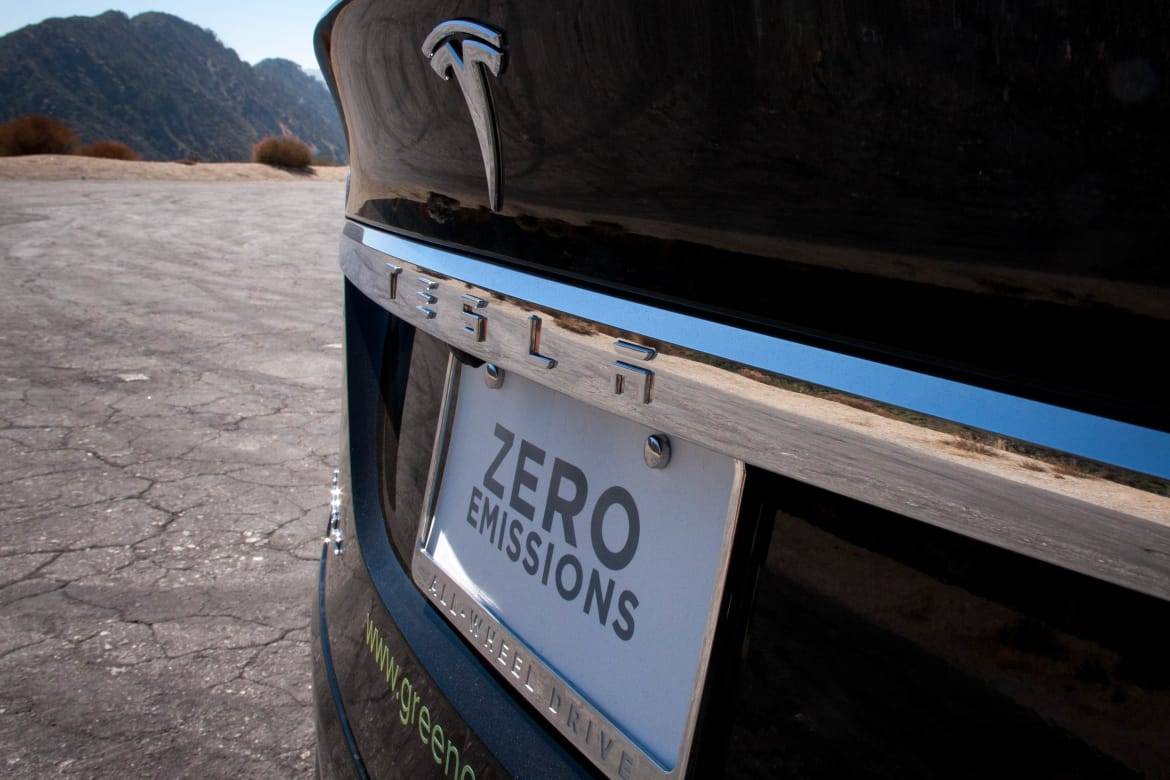Tesla Tries to Not Tread on Trump

CARS.COM — Elon Musk, the outspoken founder and CEO of Tesla Motors, is suddenly treading carefully when it comes to dealing with President Donald Trump. As part of an advisory panel to the president, Musk finds himself alongside other notable CEOs, such as Mary Barra of General Motors, Travis Kalanick of Uber and Tim Cook of Apple. However, Musk is tasked with working within an administration that he openly opposed during the 2016 presidential election.
Related: Trump and the Auto Industry
The primary goal of this 19-member Strategic and Policy Forum is to advise Trump on issues related to economic challenges and opportunities, along with the promotion and growth of jobs within the U.S. Yet working with a fledgling administration so steeped in multiple controversies has been no easy task: Via his Twitter account, Musk recently came out against the president’s immigration ban and urged other business leaders to follow suit. Ford CEO Mark Fields and Chairman Bill Ford on Monday announced that the automaker doesn’t support the president’s policy.
Why Should I Care? Musk must work with Trump, along with his Cabinet appointees, on issues directly related to the promotion of clean energy, carbon taxes, emissions regulations and job growth. The latter is the one of the few topics Tesla Motors and Trump have in common. With its brand-new Gigafactory, located just outside of Reno, Nev., now running, and with plans to dramatically increase car production with the introduction of the $35,000 Model 3 electric sedan, Tesla is poised for a potential hiring frenzy.
That’s the good news.
The bad news is that Tesla Motors and Trump make for extremely awkward bedfellows, to put it mildly. An electric-car company aligned with a presidential administration brimming with climate change skeptics is the definition of dysfunction. It could also alienate Tesla’s base of electric-car buyers, along with the several thousand folks just like them on the waiting list for the Model 3.
Musk, a surprise supporter of Trump’s secretary of state nominee, former Exxon CEO Rex Tillerson, proposed the idea of carbon taxes to the White House administration, according to Bloomberg. The idea, while supported by Tillerson himself, has little chance of moving forward in the current political climate. Don’t expect the Tesla-Trump relationship to get any less controversial in the months ahead.
Uber and Out, Car-Hailing Giant Causes Uproar With Tweet
Uber finds itself in a whirlwind of controversy following a tweet on Saturday that announced surge pricing would be suspended for Uber rides hailed from New York City’s John F. Kennedy International Airport. Large protests held against Trump’s immigration ban had brought traffic at JFK to a grinding halt that evening. The New York Taxi Workers Alliance had called its 19,000 members to strike, from 6 p.m. to 7 p.m., to show support for the protest. According to The Washington Post, Uber’s tweet about suspending surge pricing went out 30 minutes afterward.
Why Should I Care? The hashtag #DeleteUber has reached a fever pitch, though it’s worth noting that rival car-hailing companies, including Lyft, were also picking up clients (minus surge pricing fees) at JFK during the protests and the resultant strike. In its defense, Uber insists the message was meant to inform clients that it would not be profiting from the strike by having surge pricing in effect.
While Uber drew the most attention to itself via one insensitive tweet, a social media blunder isn’t the only cause for this backlash. Uber has come under increasing scrutiny for creating an underclass of workers forced to sleep in their cars, to misleading new-hires about potential income in cities like San Francisco and New York. The car hail giant recently paid $20 million to settle a legal challenge over ads promising highly inflated annual incomes.
There’s also the simple fact that Uber is hard at work helping to build and promote driverless vehicles — cars that could leave Uber’s workforce of roughly 600,000 drivers out of a job. Self-driving cars are something nearly every automaker and tech firm is working on, but Uber’s challenge is finding a balance between business sense and common sense.
Self-Drive Buses Roll Onto the Streets of Paris
They’re tres petite, but a pair of tiny self-drive buses could revolutionize how Parisians navigate the French capital. Running on their own designated lanes, safely away from other traffic, these electric-powered shuttles transport approximately 10 passengers between Gare d’Austerlitz and Gare de Lyon, train stations located on the eastern half of the city. Per The New York Times, the buses are free and will be tested along this route until April.
Why Should I Care? At this early stage, self-driving vehicles make a lot of sense when confined to scheduled routes, run at low speeds, and kept away from other traffic and most obstacles. These Parisian shuttles travel less than a half-mile at speeds most of us could safely maintain on a treadmill, and aren’t exactly sized to tackle a serious rush-hour commute. A bullet-train it’s not, as you can see in this video.
Still, it’s an intriguing first step toward combining the merits of EVs and self-driving operation into one user-friendly whole.
Featured stories




